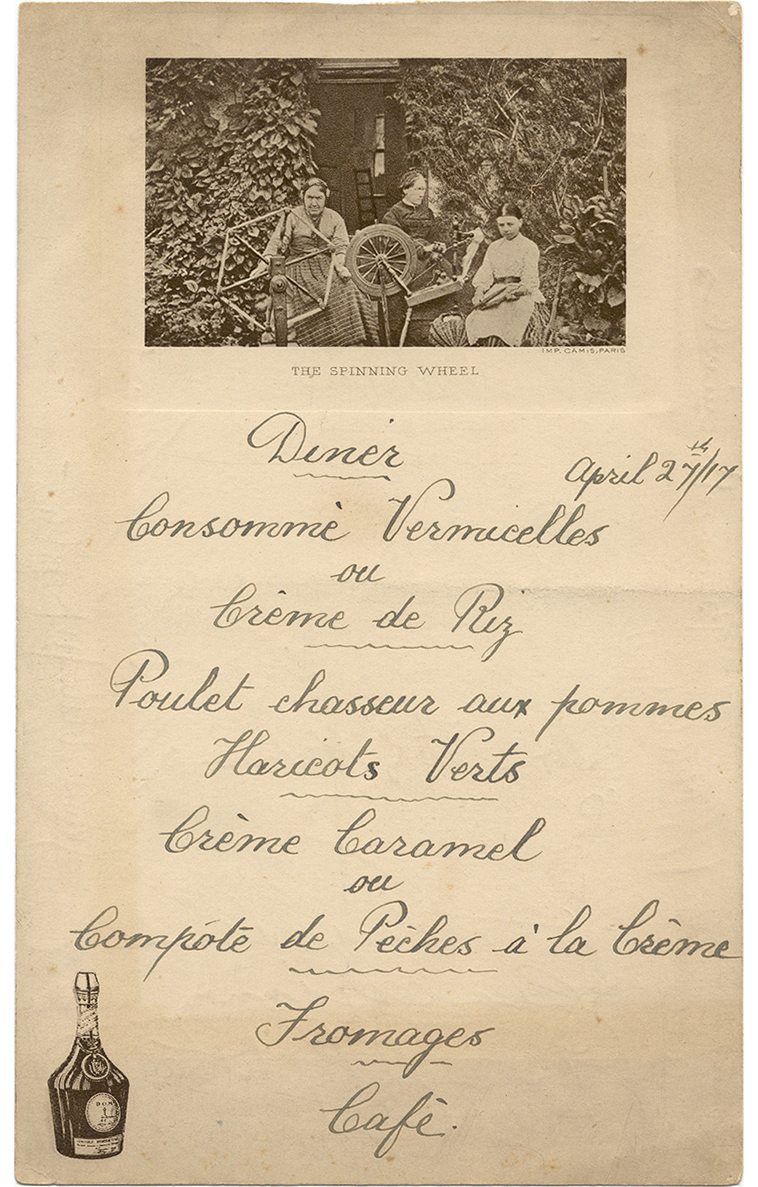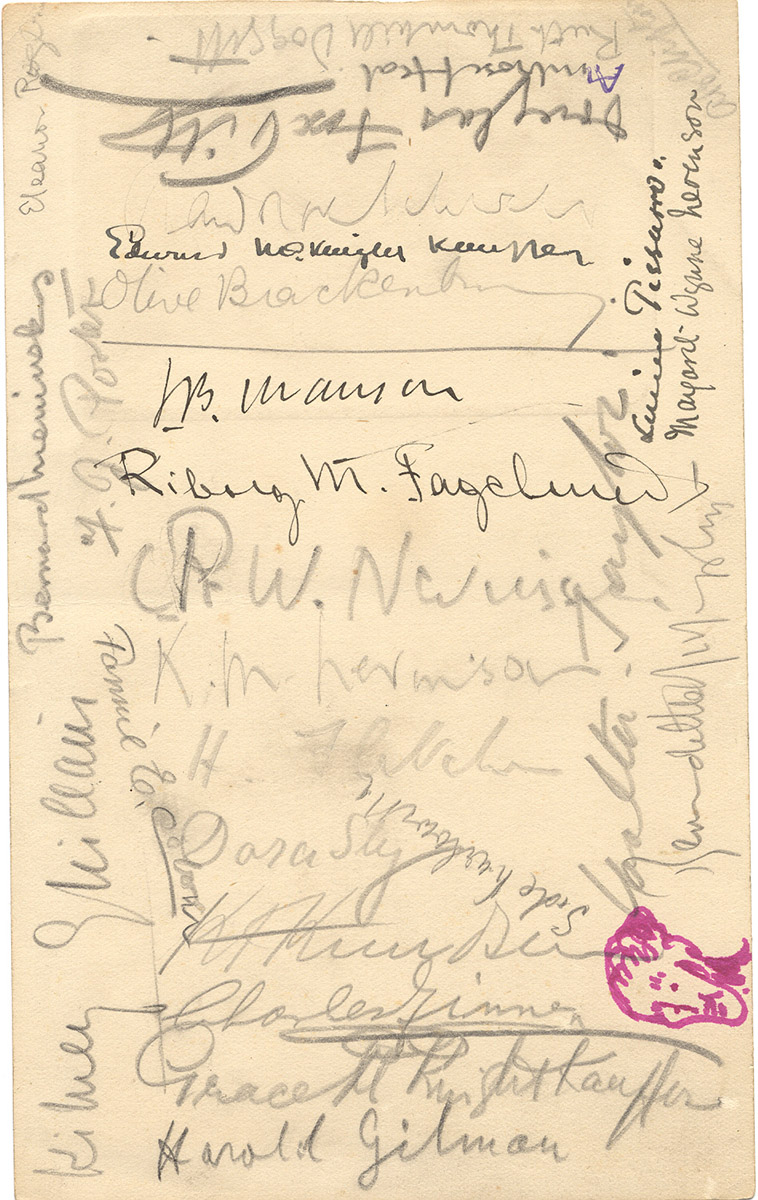Tim Craven LG discusses the inspirations behind the Group’s latest exhibition.

With an exceptional legacy to be proud of, The London Group has always celebrated its major anniversaries with special exhibitions and, though the 110th is not a major number and not long after the centenary, I couldn’t resist the opportunity to suggest a themed show that incorporated some of the early art history. The 125th anniversary seems some time away! My premise was to look back to the beginnings of the Group and consider the 32 founder members – their times (with a horrific world war upon them), their concerns, ideas and their art and how they might relate or otherwise to present members. The First World War years were perhaps the avant-garde London Group’s most glorious and ground-breaking epoch. The fact that the male-only Camden Town Group had expanded in 1913, at last, to include women was also significant and worth celebrating.
It seemed like a good idea to focus on the Group’s first exhibition at the Goupil Gallery in March 1914, the month of Camden Town’s President, Spencer Gore’s untimely and tragic death from pneumonia (the result of painting treescapes in Richmond Park in the rain – he had recently discovered Cézanne). Our archivist and historian David Redfern had also been thinking about marking the anniversary with an exhibition and he had the perfect title to contribute, the cricketing expression: 111 Not Out. For some this may seem confusing as The London Group was formed from a meeting in October 1913 with Walter Sickert presiding, while the first exhibition was not until the following spring so we can claim 2 inaugural years.
As an ex-curator at Southampton City Art Gallery, I have organised various pairings exhibitions, where two works are placed in proximity together to highlight a connection in subject, approach or concept. It is an interesting way to look at art – comparing and contrasting can sometimes spark interesting insights. It was therefore an obvious way to give a simple structure to the exhibition. Each participating member in the show would thus select and commend one of the founder members that most appealed to them in terms of personality, integrity and art practice, or perhaps the one they would most like to go to the pub with. I hoped that they might enjoy the research this might involve, though I also aware that this would not appeal to all. As there was no prescription on selection the exercise would also act as a straw poll and would reveal a favourite or two.
After a fluctuating start, we ended up with 48 participating members committed to the spirit of the research exercise. We were delighted at the resultant broad spread of choices, with David Bomberg coming out on top with 7 votes. Henri Gaudier-Brzeska was second with 5; Jacob Epstein and Percy Wyndham Lewis each had 3, and there were various with 2’s and 1’s. Nobody though chose the first President, Harold Gilman (my second choice), a very gifted painter who died, like Gore tragically young in 1919 of the great flu epidemic. The second and related task for members was to select a work of art by the chosen artist (at any stage of their career). My initial wish was that these should be represented in the exhibition by a small reproduction together with a short interpretive text on why the founder member was chosen. Although almost all were out of copyright, the reproduction fees from museums would have been prohibitive so we elected to employ QR codes which are now widespread in museums and many communication systems. These we discovered were easy to set up and free of cost. In the event, the exhibition benefitted aesthetically as lots of small reproductions alongside the interpretive labels would have detracted visually from the works.

I became addicted to organizing exhibitions when at Southampton City Art Gallery (the journey from spark of idea to PV opening is always stimulating, revealing and fun) and I had always enjoyed team-working with creative and knowledgeable colleagues as it continually broadens my outlook. Judith Jones elected to the Group in the same year as myself, and living not far from me in the south, had co-organised the In Plain Sight London Group exhibition with me at the Thelma Hulbert Gallery in Honiton in the summer of 2022. It was a rewarding and successful project for us both and I suggested that we should plan another together and expand the team to include other London Group members in the south. 111 Not Out became that vehicle and Lisa Traxler and Chris Horner joined us. We wrote an exhibition proposal with the Working Committee’s approval and sent it off to various galleries in the region. Thanks to Lisa’s connections with Quay Arts, Newport IOW, Ian Whitmore, Director, agreed to stage the show and we soon met with Ian to plan the details. That he offered us the time-slot coinciding with the exact month of the first exhibition opening was a serendipitous bonus.
As I knew and had already worked or exhibited with descendants of four founder members, I thought it would be a nice idea to invite them, as another historic link, to open the exhibition and this was welcomed by the Working Committee. Valerie Gilman is a grand-daughter of Harold Gilman (The Group’s first president) and Patrick Baty is is a great-grandson of Robert Bevan (the Group’s first treasurer) and Stanislawa de Karlowska and so has a double connection. Bevan was the first Treasurer and member of a well-known banking family. Artist Fiona McIntyre RE is Malcolm Drummond’s great-granddaughter and has demonstrably inherited the artistic gene. Drummond was also a London Group Treasurer.

There is always a frisson of jeopardy when organising London Group exhibitions as the exhibition space may not be big enough if too many members want to show. From experience we were banking on around a 50-member take-up and with 48, we were luckily on target. With the spread of 2 and 3D works, the exhibition happily fitted into the space extremely well – almost as if it was closely planned and measured. Placing a London Group show with its inherent diversity of content is always the fun and challenging part of the project and Ian, Lisa and I much enjoyed the experience and bouncing ideas off each other – they both have a first-class eye for a hang.

Although funds were not available for an illustrated catalogue, we wanted some sort of document as a legacy for the exhibition. The cost of a DL folded leaflet outlining the project and listing participating members together with reproductions of works by the first and current Presidents, was within the small budget available and was superbly designed by Hannah Luxton.
A good number of members attended the opening and for some the visit was nostalgic having spent family holidays on the IOW when young. The event was joyous and noisy and the feedback was positive. Some later related that they found the words of Valerie, Fiona and Patrick quite moving – the link between the 2 sets of members across time was thus well forged. The southern team would like to thank all participating members and others who have helped to realise this exhibition and especially the staff at Quay Arts who have been so welcoming and lovely to work with.
Tim Craven
From the archive: a menu signed by some of the founder members and friends, courtesy of Patrick Baty, Great-grandson of Stanislawa de Karwloska and Robert Bevan.
To see more photos of the show, visit the 111 Not Out photo gallery.
111 Not Out: The London Group (1913-2024) continues till 27 April
Quay Arts Centre
Sea Street,
Newport,
Isle of Wight PO30 5BD
Open Daily: 9 – 5 pm FREE



